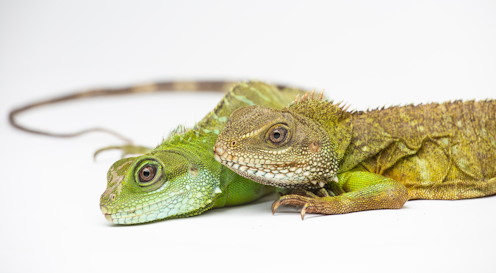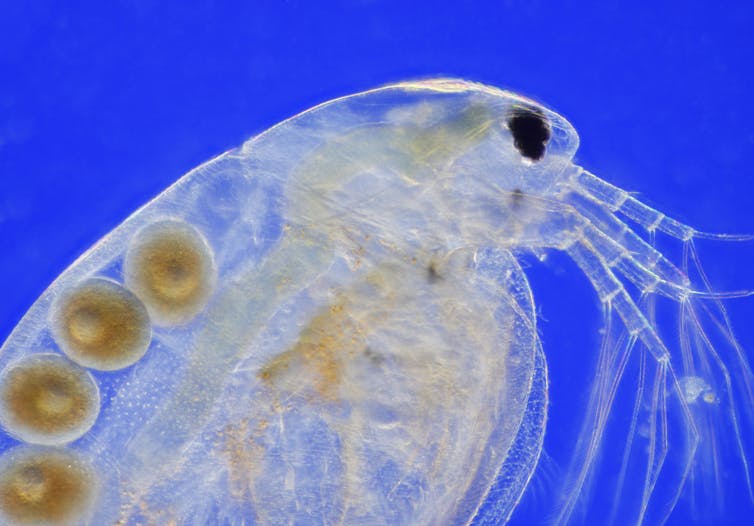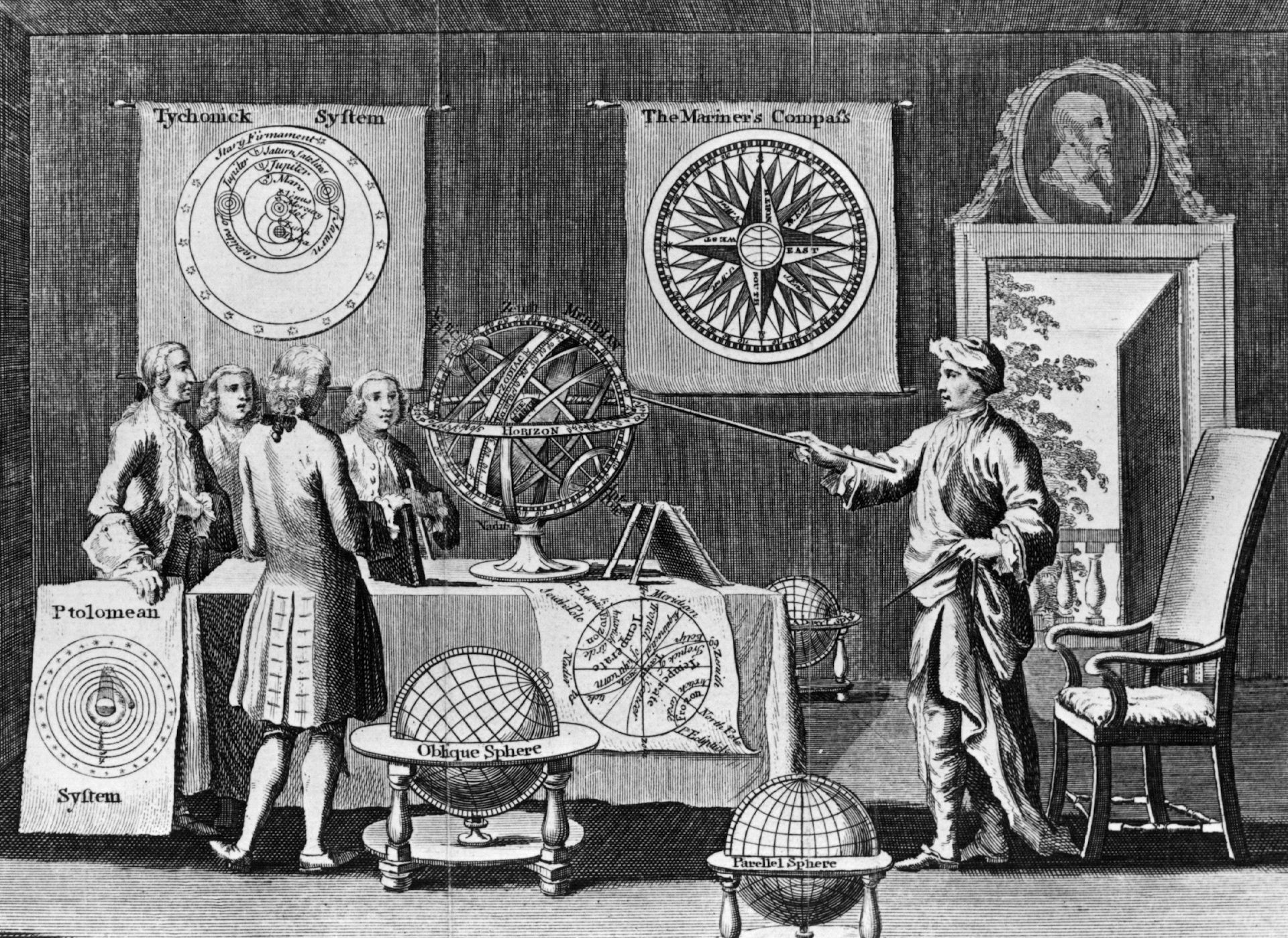Virgin births from parthenogenesis: How females from some species can reproduce without males
Parthenogenesis, a form of reproduction in which an egg develops into an embryo without being fertilized by sperm, might be more common than you realized.

An Asian water dragon hatched from an egg at the Smithsonian National Zoo, and her keepers were shocked. Why? Her mother had never been with a male water dragon. Through genetic testing, zoo scientists discovered the newly hatched female, born on Aug. 24, 2016, had been produced through a reproductive mode called parthenogenesis.
Parthenogenesis is a Greek word meaning “virgin creation,” but specifically refers to female asexual reproduction. While many people may assume this behavior is the domain of science fiction or religious texts, parthenogenesis is surprisingly common throughout the tree of life and is found in a variety of organisms, including plants, insects, fish, reptiles and even birds. Because mammals, including human beings, require certain genes to come from sperm, mammals are incapable of parthenogenesis.
Creating offspring without sperm
Sexual reproduction involves a female and a male, each contributing genetic material in the form of eggs or sperm, to create a unique offspring. The vast majority of animal species reproduce sexually, but females of some species are able to produce eggs containing all the genetic material required for reproduction.

Females of these species, which include some wasps, crustaceans and lizards, reproduce only through parthenogenesis and are called obligate parthenogens.
A larger number of species experience spontaneous parthenogenesis, best documented in animals kept in zoo settings, like the Asian water dragon at the National Zoo or a blacktip shark at the Virginia Aquarium. Spontaneous parthenogens typically reproduce sexually, but may have occasional cycles that produce developmentally ready eggs.
Scientists have learned spontaneous parthenogenesis may be a heritable trait, meaning females that suddenly experience parthenogenesis might be more likely to have daughters that can do the same.
How can females fertilize their own eggs?
For parthenogenesis to happen, a chain of cellular events must successfully unfold. First, females must be able to create egg cells (oogenesis) without stimulation from sperm or mating. Second, the eggs produced by females need to begin to develop on their own, forming an early stage embryo. Finally, the eggs must successfully hatch.
Each step of this process can easily fail, particularly step two, which requires the chromosomes of DNA inside the egg to double, ensuring a full complement of genes for the developing offspring. Alternatively, the egg can be “faux fertilized” by leftover cells from the egg production process known as polar bodies. Whichever method kicks off the development of the embryo will ultimately determine the level of genetic similarity between the mother and her offspring.
The events that trigger parthenogenesis are not fully understood, but appear to include environmental change. In species that are capable of both sexual reproduction and parthenogenesis, such as aphids, stressors like crowding and predation may cause females to switch from parthenogenesis to sexual reproduction, but not the other way around. In at least one type of freshwater plankton, high salinity appears to cause the switch.
Advantages of self-reproduction
Though spontaneous parthenogenesis appears to be rare, it does provide some benefits to the female who can achieve it. In some cases, it can allow females to generate their own mating partners.
The sex of parthenogenetic offspring is determined by the same method sex is determined in the species itself. For organisms where sex is determined by chromosomes, like the XX female and XY male chromosomes in some insects, fish and reptiles, a parthenogenetic female can produce offspring only with the sex chromosomes she has at hand – which means she will always produce XX female offspring. But for organisms where females have ZW sex chromosomes (such as in snakes and birds), all living offspring produced will either be ZZ, and therefore male, or much more rarely, WW, and female.
Between 1997 and 1999, a checkered gartersnake kept at the Phoenix Zoo gave birth to two male offspring that ultimately survived to adulthood. If a female mated with her parthenogenetically produced son, it would constitute inbreeding. While inbreeding can result in a host of genetic problems, from an evolutionary perspective it’s better than having no offspring at all. The ability of females to produce male offspring through parthenogenesis also suggests that asexual reproduction in nature may be more common than scientists ever realized before.
Biologists have observed, over long periods of time, that species that are obligate parthenogens frequently die out from disease, parasitism or changes in habitat. The inbreeding inherent in parthenogenetic species appears to contribute to their short evolutionary timelines.
Current research on parthenogenesis seeks to understand why some species are capable of both sex and parthenogenesis, and whether occasional sexual reproduction might be enough for a species to survive.
Mercedes Burns has previously received funding from the National Science Foundation.
Read These Next
Christmas trees are more expensive than ever in Colorado — what gives?
Most Christmas trees are imported from other states, which drives up costs.
Science has always been marketed, from 18th-century coffeehouse demos of Newton’s ideas to today’s T
Science has always been part of a marketplace of ideas, where claims vie for audiences, resources and…
What’s at stake in Trump’s executive order aiming to curb state-level AI regulation
In the absence of comprehensive federal AI regulation, states have stepped in. The Trump administration,…





